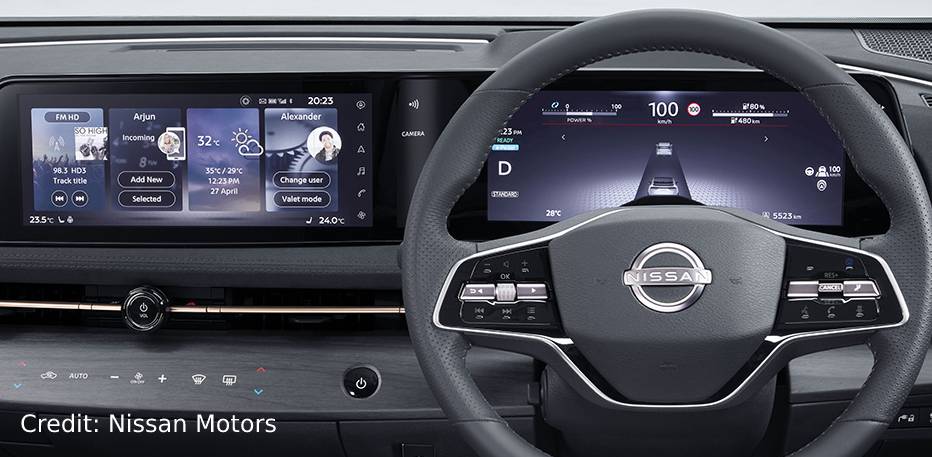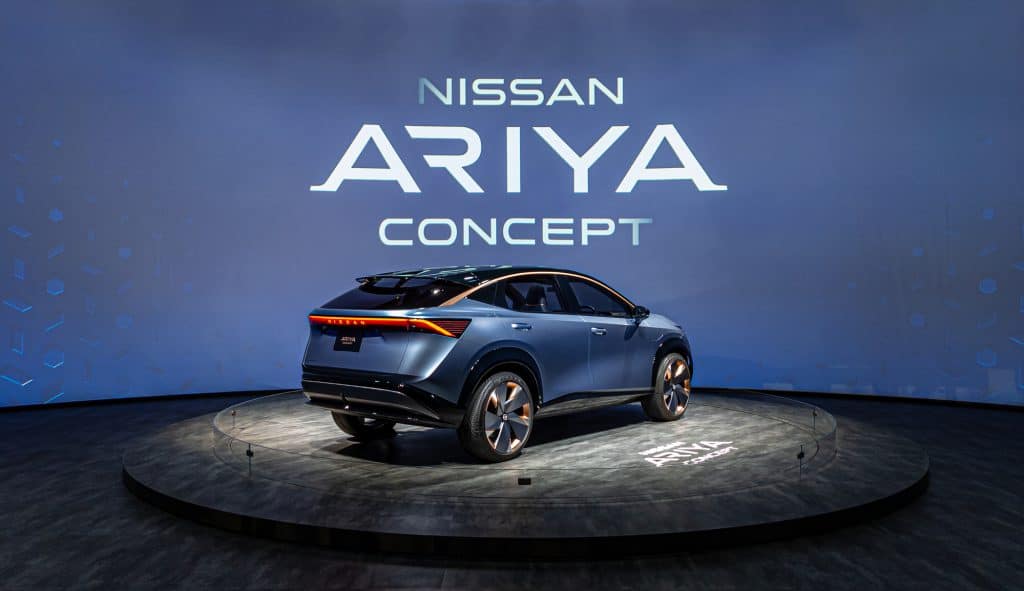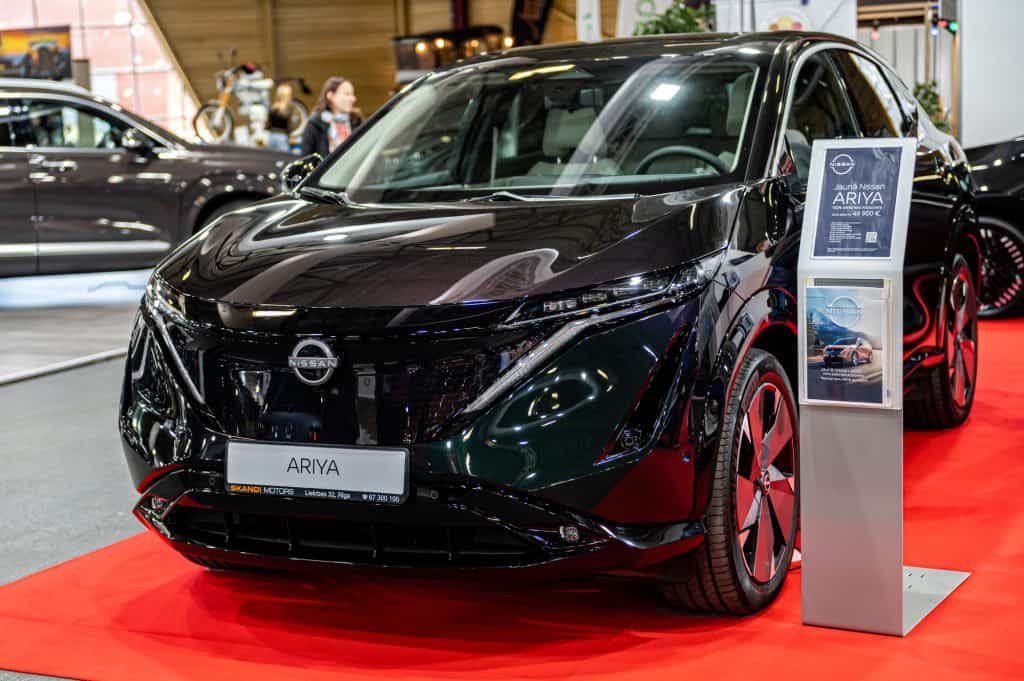Until the Tesla Model 3 was released, Nissan held the crown for the best-selling fully electric car: the Nissan Leaf. It offered a reasonable all-electric range without a premium price tag, resulting in it being popular amongst eco-conscious drivers.
But Nissan have now scrapped the Leaf (sort of), and they are instead rolling out their newest EV: the Nissan Ariya. This totally revamped car looks like it’ll sell well, but why is this? What features does it offer?
And while we’re here, what does “Ariya” mean – and how should you pronounce it? It is these questions we will answer in today’s blog.
What “Ariya” Means & Why Nissan Chose The Word “Ariya”
The word “Ariya” has a few different definitions based on its original language derivation:
- The equivalent word in Sanskrit means “elevated” or “honorable”.
- A Hebrew-derivation meaning “lioness”.
- The name across America tends to mean ‘a ray of hope’, literally stemming from the word itself (“ariya” being split into “a”, “ray” – i.e. a ray [of hope]).
But it is the first source that Nissan used as inspiration from the Nissan Ariya’s name: Matthew Weaver (Nissan VP) explained that Nissan were keen to highlight the word’s original Sanskrit and Pali roots in reflecting the car’s noble and dependable qualities:
It means noble, dependable and something to be respected. At Nissan, we always try to find a name that reflects the character.
Matthew Weaver, VP, Nissan Corp, Feb 2022
Nissan, a Japanese company, wanted to build a new electric car from the ground-up, and for Nissan this meant infusing various culture’s words and concepts into the car. But of course, Nissan’s Japanese roots and philosophies were present throughout the Ariya’s design and feature-set too.
Japanese Concepts Used When Designing The Ariya

A Nissan press release highlighted how the Ariya has been designed with a futuristic yet timeless approach in mind, and many design choices were based around traditional Japanese words and concepts:
- Omotenashi (“おもてなし”): “The customer is always right” isn’t a Japanese phrase, but Omotenashi sure is: the idea that guests or customers should be offered an unrivalled level of care and hospitality. Nissan have been eager to offer as much to Ariya’s customers as possible, with a brand-new design that offers loads of new features and design elements.
- Iki (“粋”): Nissan’s designers were eager to create an EV that was “chic”; simplistic but also modern. This is shown in various areas, including the instrument panels which are a series of flat touch-enabled buttons.
- Kabuku (“傾く”): Have you ever walked down the street and seen someone dressed (or acting) in a way that makes them stand out – for better or worse? This unconventionalism and rebellious streak is known as Kabuku in Japanese, and the Ariya has been designed to stand out both inside and out.
- Ma (“間”): Ma combines Japanese minimalism with simple construction techniques to properly use empty spaces, which is a fancy way of saying that the Ariya’s cabin is designed to look minimalist – but still offers all the features you would expect and need.
- Sei (“整”): This concept follows on from Ma, and refers to how the physical shape of the car offers sensible and clever approaches – such as the instrument controls offering haptic feedback (same as a smartphone’s keyboard).
- Utsuroi (“移ろい”): A flowing, fluid space that seems seamless and natural (“Utsuroi”) is what Nissan were keen to offer with the Ariya, and various design elements – inside and out – offer a flowing, natural and cohesive experience (according to Nissan’s press release, that is!).
- Engawa (“縁側”): You know how some homes have an “inside out” feel, where a corridor from the inside leads straight outside – almost without you realising it? This is known as Engawa within Japan, and the Nissan Ariya’s infotainment system helps keep drivers connected to the outside world by including support for the weather, music playing, viewing the exterior cameras and more.
- Andon (“行燈”): Andon is a paper lantern that products a small glow, traditionally used around Japanese homes to light them. Based on this idea, various instrumental panels and cabin areas have been lit by soft “welcoming ambience” within the Ariya car.
- Kumiko (“組子”): Kumiko is a complex woordworking approach which produces a geometric pattern, which Nissan used at the front of the Ariya to replace the grille in a traditional gas car.
Now that we know what Ariya means and some of the concepts behind it, how do you actually say it?!
How To Pronounce “Ariya”

There seems to be a few ways that “Ariya” could be pronounced, with some calling it the “Arr-ee-aa” (like the first part of the name Ariana), and others saying it like “Uhh-rye-uhh”.
However if you watch a few YouTube videos (such as from Fully Charged, Electrified Journeys Japan or CarWow), they tend to go with the first variation: “Arr-ee-aa”. This is how I naturally considered pronouncing it, too, when I first saw Nissan announce the Ariya.
If you’re still not convinced, though, just listen to Nissan themselves – at 7 or 8 seconds in their announcement video (the video doesn’t have a thumbnail at the time of writing, but it’s from the official Nissan USA YouTube channel):
Nissan USA also goes with the “arr-ee-aa” pronunciation, just like the start of the name “Ariana”.
Does The Nissan Ariya Replace The Leaf?

The Nissan Ariya looks like a really interesting car: it comfortably fits 5 people (and would work well as a family car), it has a 265-285 mile range (depending on the trim) with support for a 63 KWh or 87 KWh battery.
This makes it an interesting rival to the VW ID.3 or ID.4, Ford Mustang Mach-E or Tesla Model Y.
Its exterior and interior technology is better than the Leaf, and it also has better performance. So, does the Ariya completely replace the Leaf?
Well, it’s complicated. Nissan are aiming to produce a crossover, and in some ways the Leaf will morph into this new crossover model. However we don’t currently know whether Nissan will keep the “Leaf” name, or come up with a new name entirely for this all-electric crossover.
All we can say right now is that the Leaf contains some outdated approaches and tech (including their CHAdeMo charging plug, compared to the Ariya’s CCS plug), so it made sense for Nissan to roll out a brand new model. No-one wants to buy a brand new car and feel that it’s out of date, after all.
Why We’re Excited For The Ariya
The last few years have seen an explosion in car manufacturers releasing all-electric cars. Ford have some great new all-electric cars, VW have an entire EV range coming out, and even Toyota (who seem to prefer hydrogen and hybrids) have a fully electric car coming out soon.
So it’s not just Tesla and Nissan producing mass-market EVs anymore, and in this sense, I think it makes sense for Nissan to retire the Leaf name and start with new badges – starting with the Ariya.
Otherwise people might start thinking that Nissan are a one-trick pony in the EV world, which of course they are not. They are often a top 10 car producer, so moving ahead with the Ariya makes sense – and it looks like an awesome EV. We think that it’ll do well.